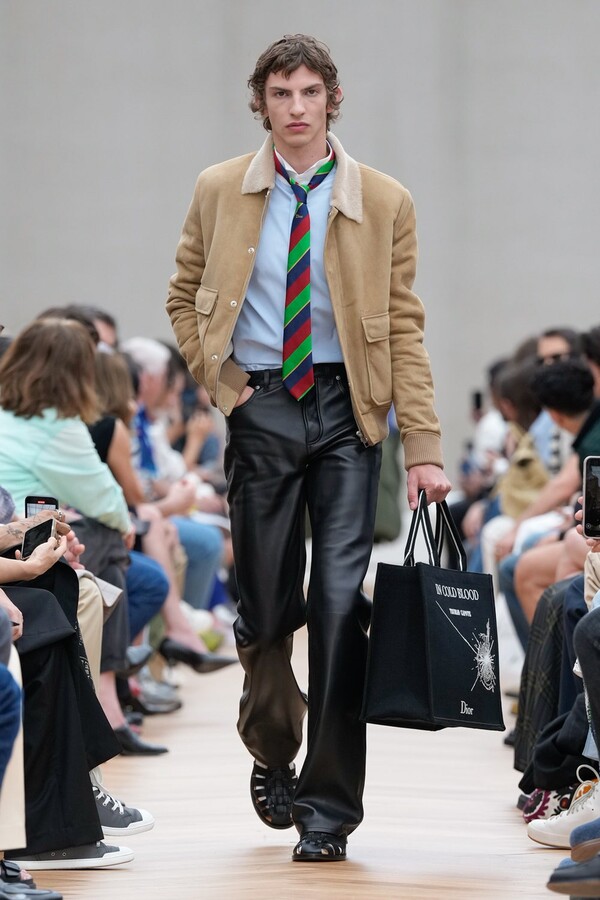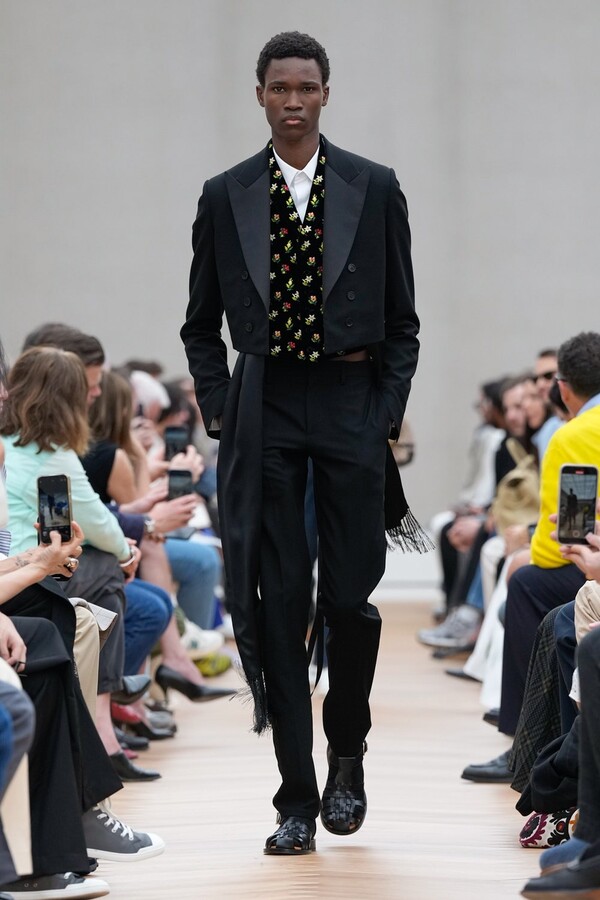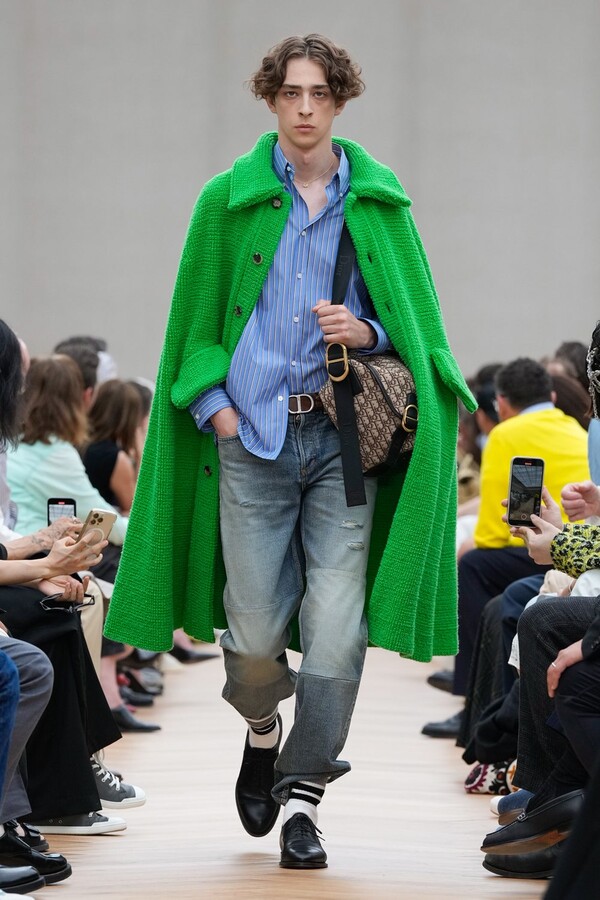Drafting Dior: Jonathan Anderson’s Opening Statement
Jonathan Anderson’s first menswear collection for Dior didn’t arrive with a bang — it arrived with structure. Set inside a velvet-lined space echoing the Gemäldegalerie in Berlin, the room felt more like a study than a runway. Two quiet 18th-century still lifes by Chardin hung on the walls, offering a kind of calm entry point — not into nostalgia, but into detail.
Rather than deconstruct Dior, Anderson paused to examine it. The silhouettes were crisp but soft, carrying with them elements of historical menswear: tightly tailored waistcoats, grey suiting, military references, and nods to the house’s own codes — like the Bar jacket, reconfigured with a lighter touch. Donegal tweeds and regimental stripes added weight, but nothing felt heavy.
His approach to formality was never rigid. Loose ties, uneven collars, and layered cargo shorts added a touch of tension — something adolescent, a bit off, yet calculated. It called back to his own coming of age in a Britain where royal aesthetics mixed with rebellion. These weren’t costumes. They were interruptions.
Pieces drawn from Dior’s past didn’t feel like quotations. Archival dresses were reframed rather than repeated. Rococo-style embroidery and the romanticism Monsieur Dior admired appeared in details — but kept their distance from decoration.
Accessories expanded the idea. The Book Tote featured covers from classic novels instead of logos. A crossbody referenced Dracula. The Lady Dior was unraveled — literally — into a fringe of handwoven linen, thanks to a collaboration with artist Sheila Hicks. Anderson used these objects to shift the center of gravity, pulling Dior away from iconography and into narrative.
This wasn’t an overhaul. It was a calibration. Anderson treated Dior as something alive — not untouchable, not sacred, but adaptable. What came through was not noise or provocation, but tempo. Not a signature stamped across every look, but a framework — measured, specific, and grounded in a long view of fashion history that understands its weight, but doesn’t overstate it.


